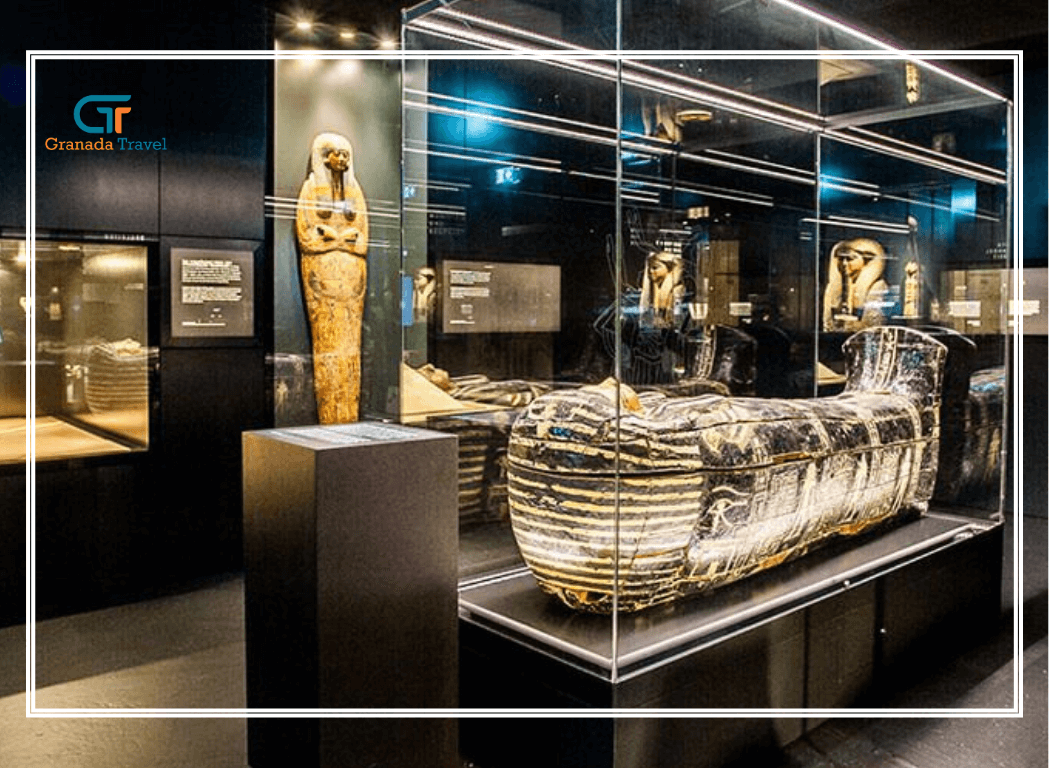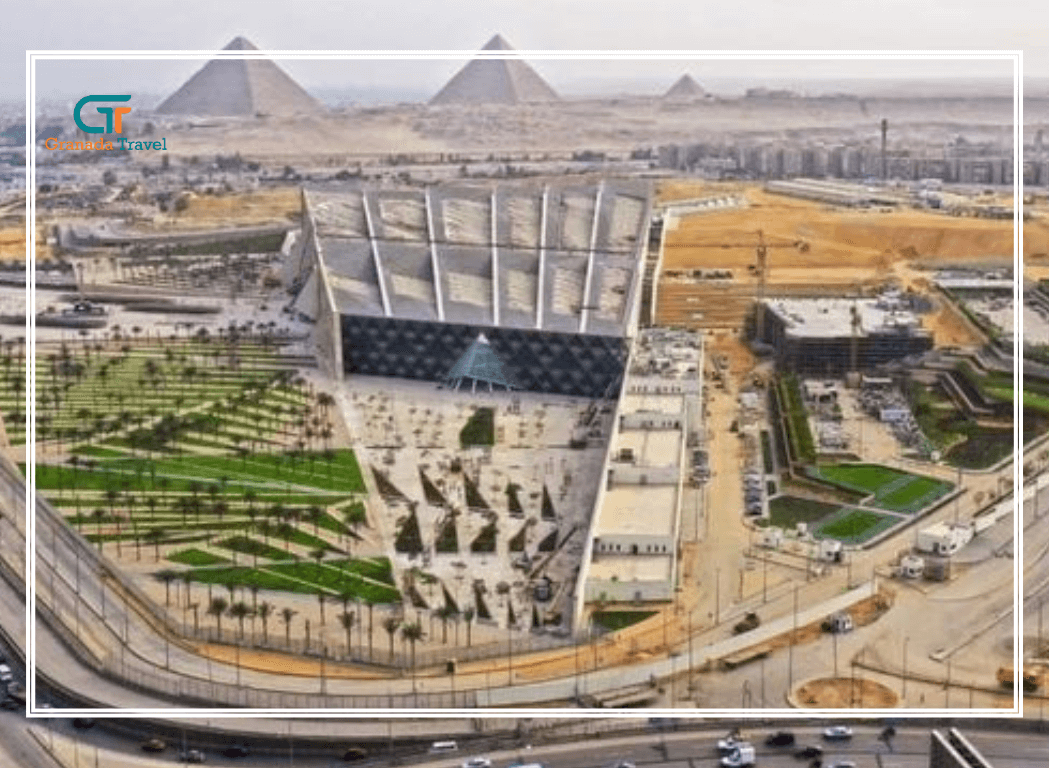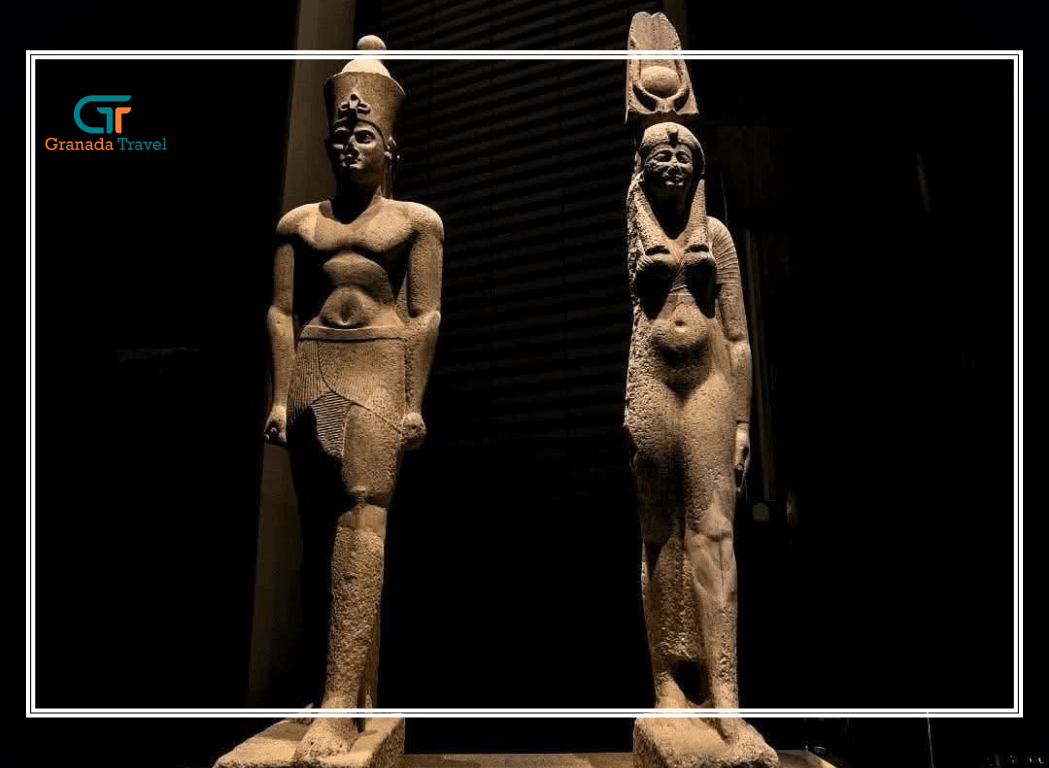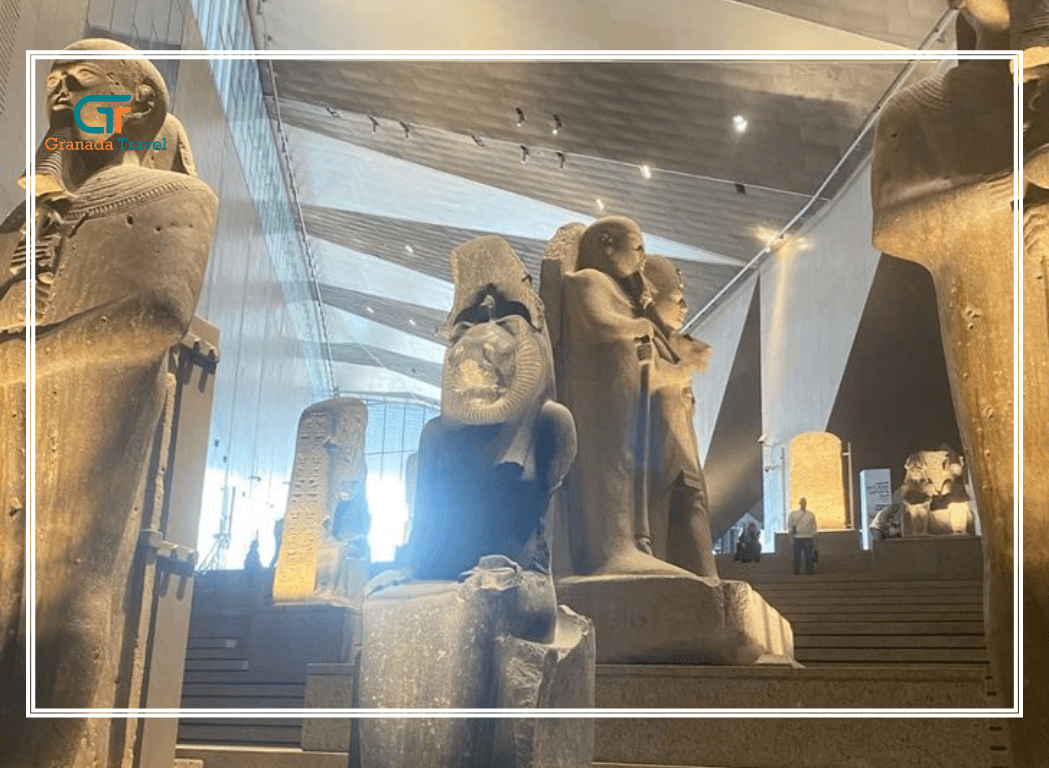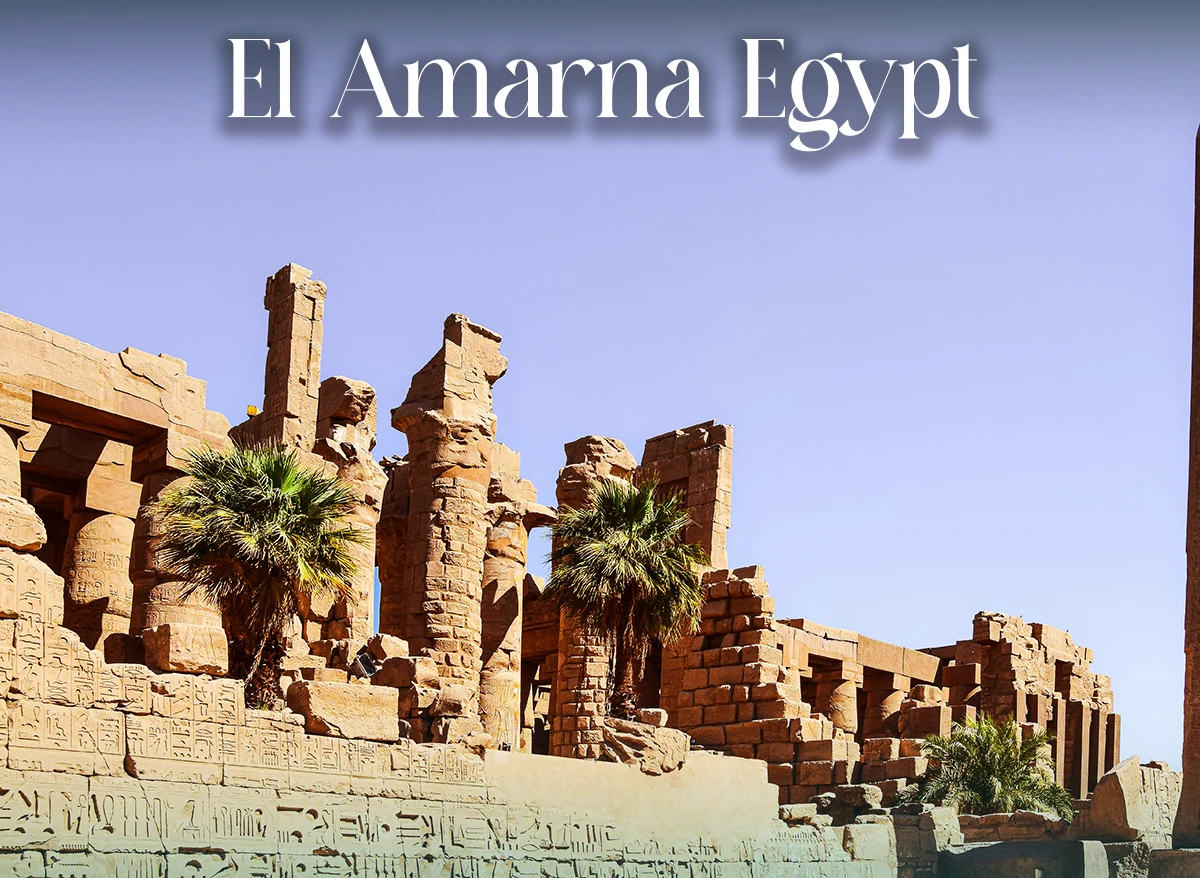
Unearthing the Sun City: A Journey to El Amarna Egypt
El Amarna Egypt, the very name conjures images of radical reform, artistic innovation, and a fleeting moment of monotheistic zeal in the heart of ancient Egypt. More than just a historical footnote, Tell el Amarna Egypt, as the archaeological site is formally known, represents a unique and profoundly significant chapter in the grand tapestry of Egyptian civilization. Nestled on the east bank of the Nile, approximately 312 kilometers south of Cairo and 402 kilometers north of Luxor (the ancient site of Thebes), this enigmatic site offers an unparalleled glimpse into the reign of one of Egypt's most controversial pharaohs, Akhenaten.
The Visionary Pharaoh and the Birth of Amarna City
To understand the allure and importance of El Amarna Egypt, we must first delve into the mind of its founder, Akhenaten. Originally known as Amenhotep IV, he ascended the throne of Egypt during the opulent 18th Dynasty, a period of immense wealth and power for the land of the pharaohs. However, Akhenaten harbored a revolutionary vision, one that challenged the deeply entrenched polytheistic beliefs and the immense power of the Amun priesthood centered in Thebes.
His radical shift involved elevating a single deity, the Aten –the visible disk of the sun– to the status of supreme god. This was not merely a theological adjustment; it was a profound socio-political upheaval. To fully implement his new religious doctrine, Akhenaten decided to break away from the traditional religious and political centers. He chose a fresh, untouched site in Middle Egypt, a virgin landscape "between the two lands," to establish his new capital. This ambitious endeavor led to the rapid construction of Akhetaten, meaning "Horizon of the Aten," which we now know as Amarna City.
The creation of Akhetaten was a colossal undertaking, a testament to Akhenaten's unwavering commitment to his vision. Within a remarkably short period, palaces, vast open-air temples dedicated to the Aten, administrative buildings, workshops, and residential areas for thousands of inhabitants sprang up from the desert sands. The city's layout, unlike the organic growth of other Egyptian urban centers, was meticulously planned, reflecting the pharaoh's desire for a new order.
Amarna Ancient Egypt: A Glimpse into a Revolution
The Amarna location was strategically chosen for its natural amphitheater formed by the eastern cliffs, which provided a symbolic "horizon" for the Aten. The city's design was revolutionary, emphasizing open spaces and direct access to the sun. The traditional enclosed temples with dark sanctuaries were replaced by grand open-air courtyards where the sun's rays could directly illuminate the altars and worshippers. This architectural shift was a physical manifestation of the new religious practices.
Beyond the grand scale of its architecture, Amarna ancient Egypt is famous for its distinctive artistic style. The rigid, idealized forms of traditional Egyptian art gave way to a more naturalistic and expressive portrayal of the human form. This "Amarna style" is characterized by elongated features, sloping foreheads, prominent hips, and a remarkable intimacy in depictions of the royal family. Reliefs and sculptures show Akhenaten, Nefertiti, and their daughters in tender, informal moments, often basking in the life-giving rays of the Aten. This artistic revolution, mirroring the religious one, sought to depict "living in truth" (ankh Maat), the central tenet of Akhenaten's faith.
One of the most remarkable discoveries at Tell el Amarna Egypt, highlighting its international significance, is the collection of the Amarna Letters. These cuneiform tablets, discovered in the royal archives, comprise diplomatic correspondence between the pharaoh and various rulers of the Near East and local vassals. They offer an invaluable window into the geopolitical landscape of the Late Bronze Age, revealing intricate networks of trade, alliances, and rivalries, and showcasing Amarna City as a hub of ancient diplomacy.
Why is Tell el-Amarna, Egypt a Tourist Attraction?
Despite its relatively brief existence, Tell el-Amarna, Egypt is an undeniable tourist attraction for several compelling reasons:
- A Unique Historical Anomaly: It offers a rare opportunity to witness a complete ancient Egyptian city, largely untouched by subsequent rebuilding and modifications, giving us a clearer understanding of urban planning and daily life during a specific, revolutionary period.
- The Amarna Period's Legacy: The site stands as the tangible testament to Akhenaten's radical religious experiment, a bold attempt to shift the spiritual landscape of an entire civilization.
- Artistic Masterpieces: Even in their ruined state, the surviving reliefs and architectural fragments showcase the groundbreaking Amarna art style, which profoundly influenced later Egyptian art.
- Insights into Daily Life: Excavations have revealed not just royal palaces and temples, but also the homes and workshops of ordinary citizens, providing a remarkably detailed picture of daily life in ancient Egypt, from the baker to the sculptor.
- Archaeological Significance: For Egyptologists and enthusiasts, Amarna is a treasure trove of information, constantly yielding new discoveries that challenge and refine our understanding of this fascinating era.
While much of the mud-brick architecture of Amarna City has succumbed to the ravages of time, visitors can still explore the remnants of the Great Aten Temple, the Royal Palace, and numerous private tombs carved into the surrounding cliffs. The scale of the site and the stories it tells are truly awe-inspiring.
What happened to Amarna Egypt? The Aftermath of a Revolution
The grand experiment of Akhenaten and Amarna City was ultimately short-lived. His reign lasted approximately 17 years, and after his death, the carefully constructed edifice of Atenism began to crumble. What happened to Amarna Egypt? The answer lies in the deep-seated resistance to Akhenaten's radical reforms from the powerful traditional priesthood of Amun and a populace disoriented by the abrupt shift in their millennia-old religious traditions.
Akhenaten's successor, Smenkhkare (whose identity is still debated), and then the young Tutankhamun (originally Tutankhaten, signifying his devotion to the Aten), initiated a gradual but decisive return to the old ways. The capital was swiftly moved back to Thebes, the traditional religious heartland of Egypt. The temples of Amun were reopened, and their priests reinstated. The very name of Akhenaten was systematically erased from monuments, and his images defaced. Amarna City was abandoned, its buildings dismantled for their reusable materials, or left to decay into the desert.
This "damnatio memoriae", the deliberate obliteration of memory, was so thorough that the Amarna period remained largely unknown until the archaeological discoveries of the 19th and 20th centuries. The city, built with such fervent devotion, became a ghost town, a poignant reminder of a revolutionary ideal that failed to take root.
Is Amarna Worth Visiting? Exploring the Amarna Egypt Map
For those with a deep interest in ancient Egyptian history, particularly the nuances of the New Kingdom, Is Amarna worth visiting? Absolutely. While it may not boast the grand, perfectly preserved temples of Luxor or the imposing pyramids of Giza, its unique historical context and the sheer scale of the ruins offer an experience unlike any other in Egypt.
To make the most of a visit, it's highly recommended to consult an Amarna Egypt map beforehand. The site is vast and spread out, encompassing various archaeological zones. Key areas to explore include:
- The Royal Wadi: This natural valley holds the rock-cut tombs of Akhenaten's officials and nobility, offering fascinating insights into the lives and beliefs of his followers. The artwork within these tombs, though often damaged, provides prime examples of the Amarna style. (You might find some stylistic comparisons and contrasts with the art found in the Tombs of the Nobles near Luxor, although the themes and artistic conventions differ significantly).
- The North Palace: A sprawling complex believed to be the residence of Akhenaten's eldest daughter, Meritaten, offering clues to royal living.
- The Great Aten Temple: While mostly in ruins, its immense scale and open-air design remain evident, showcasing the revolutionary architectural principles of the Aten cult.
- The North Riverside Palace: Thought to be a royal residence or a reception palace, providing more insights into the daily life of the royal family.
- The Workmen's Village: A rare example of a well-preserved ancient Egyptian settlement, offering a glimpse into the living conditions of the laborers who built Amarna City.
Accessing El Amarna Egypt typically involves a drive from nearby cities like Minya. It's advisable to arrange transportation and a knowledgeable guide, as the site is extensive and requires context to fully appreciate its significance.
Discover hidden carvings and sacred halls at Khnum Temple Esna, a lesser-known gem of Upper Egypt.
What is Amarna Famous For? Religion and Art in the Sun City
Beyond its role as a temporary capital, What is Amarna famous for? It is predominantly renowned for two interconnected revolutions:
- The Amarna Religion (Atenism): This monotheistic or monolatristic worship of the Aten was a radical departure from millennia of polytheism. The religion of the Amarna centered on the Aten as the sole creator and sustainer of life, with Akhenaten serving as the divine intermediary between humanity and the sun disk. This era saw the suppression of other deities, particularly Amun, and the destruction of their images.
- The Amarna Art Style: As discussed earlier, this distinctive artistic movement broke away from traditional Egyptian artistic conventions. Its naturalism, fluidity, and intimate portrayal of the royal family are instantly recognizable and represent a significant moment in art history. The famous bust of Nefertiti, though found elsewhere, is a prime example of the beauty and innovation of this period's sculpture.
The impact of Amarna's religion and art, though officially suppressed, resonated in subtle ways throughout later Egyptian history. The brief, intense light of Akhenaten's vision left an indelible mark, reminding us of the dynamic nature of ancient Egyptian beliefs and practices.
Connecting the Dots: El Amarna within the Broader Egyptian Landscape
While El Amarna Egypt stands as a unique outlier in Egyptian history, its story is deeply intertwined with other significant sites. The rejection of Amun and the move from thebes egypt directly highlights the immense power wielded by the Amun priesthood in traditional Egyptian society. The subsequent return to Theban traditions under Tutankhamun and Horemheb underscores the strength of established religious and political structures.
For those exploring the grandeur of ancient Egypt, considering the parallels and contrasts between Amarna City and other monumental sites enhances the overall understanding. Imagine the vibrant, sprawling city of Thebes, with its colossal temples like Karnak and Luxor, a stark contrast to the open, sun-drenched architecture of Akhetaten. Or compare the artistic expressions of the Amarna period with the more conventional depictions found in the Valley of the Nobles, showcasing the shift in artistic ideals. Even sites like Medinet Habu, with its powerful depictions of later pharaohs asserting their might, offer a counterpoint to Akhenaten's singular focus.
Horizon of the Aten
In conclusion, El Amarna, Egypt is far more than just a collection of ruins. It is a testament to the audacious vision of a pharaoh who dared to defy millennia of tradition, a fascinating archaeological puzzle that continues to reveal secrets, and a unique window into a pivotal, albeit brief, moment of profound religious and artistic transformation in ancient Egypt. Its story, though often overshadowed by the more enduring monuments, is crucial for understanding the complexities and dynamism of this magnificent civilization. A visit to this "Horizon of the Aten" is not just a journey through ancient stones, but a journey into the heart of a revolution.

